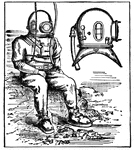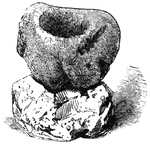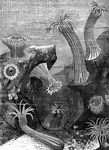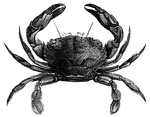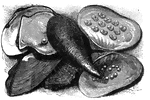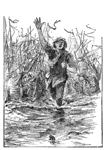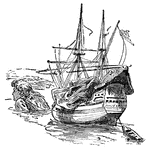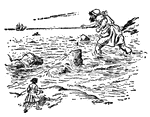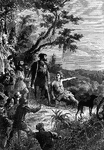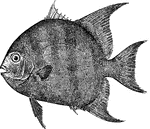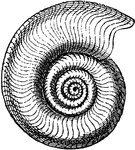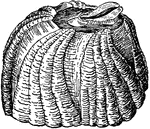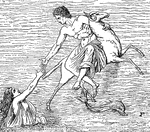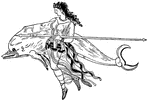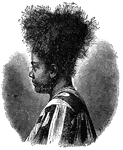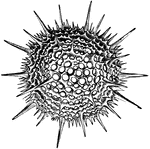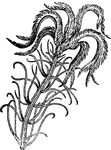
Argonaut, sectional view
Argonaut, sectional view submerged, 1901. Man in conning-tower making observations. Second man steering…
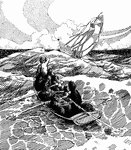
Henry Hudson
As part of a mutiny, Henry Hudson is seized and set adrift along with the loyal carpenter and the sick…

Second Naval Battle
"Second naval battle in Hampton Roads- fight between the Federal ironclad Monitor, of two guns,…

Burnside Expedition
"The Burnside Expedition- melancholy deaths of Colonel J. W. Allen, Surgeon Waller and the Second Mate…
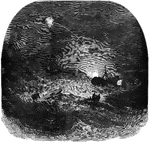
Monitor
"Loss of the Monitor- gallant attempt of the officers and crew of the United States steamer…

Steamer Alabama
"The Confederate privateer steamer Alabama (290). Captain Raphael Semmes. Our illustration…
Fort Taylor
"Fort Taylor, Key West, Fla. Key West, the most western of the Pine Islands, is about sixty miles southwest…
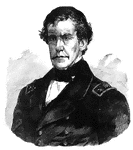
Rear Admiral Charles Wilkes
"Rear Admiral Wilkes, born in New York city, April 3rd, 1798, died in Washington, D. C., February 8th,…
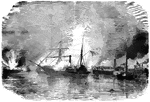
Harriet Lane
"Daring and desperate attack- surprise and capture of the United States gunboat Harriet Lane…
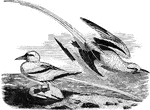
Tropicbird
Notable for its lengthy tail-feathers, the tropic bird inhabits the tropical regions of the Atlantic…

Bicolored sea-snake
The bicolored sea-snake is found in the waters of the Pacific Ocean, especially in the vicinity of Tahiti.
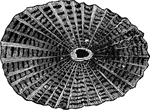
Greek fissurella
"The Greek Fissurella, F. Græca, is found in the Mediterranean and the Indian Ocean.…
Lingula anatina
"The Lingula anatina has a long peduncle issuing from between the umbones. The valves are nearly…
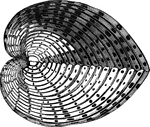
Cardium junonae
"The C. junonae is a very beautiful species. The great assemblage of the different kinds is…

Arca tortuosa
"In the Arcacea the shells are nearly equal, usually thick and furnished with a long row of reeth at…

City Hall of New York
"New York is a city in Southern New York; coextensive with New York, Kings, Queens, and Richmond counties,…
!["New York is a city in Southern New York; coextensive with New York, Kings, Queens, and Richmond counties, on New York Bay, the Hudson and East rivers, Long Island Sound and the Atlantic Ocean; the first city in the United States in population and commercial importance, and after London, the largest metropolitan center in the world. New York is noted for the number and height of its office buildings. In 1911 there were 50 such structures in occupancy, ranging from 14 to 50 stories in height, or from 179 to 700 feet above ground level, and 16 more were nearing completion. The tallest building was that of the Metropolitan Life Insurance Company, 700 and one quarter feet to top of lantern on its majestic tower. Other conspicuous ones [include the] Park Row, 382 [feet]."—(Charles Leonard-Stuart, 1911)](https://etc.usf.edu/clipart/15600/15666/nyparkrow_15666_mth.gif)
Park Row Building of New York
"New York is a city in Southern New York; coextensive with New York, Kings, Queens, and Richmond counties,…

Bracae
"Trowsers, pantaloons, were common to all the nations which encircled the Greek and Roman population,…

Sawfish Head
"The Sawfish is so called from the saw-like weapon into which the snout is produced. They are common…

Steamboat of 1736
"A steamboat is a boat or vessel propelled by steam acting either on paddles or on a screw. The term…
American River Steamboat
"A steamboat is a boat or vessel propelled by steam acting either on paddles or on a screw. The term…

Modern Sound Propeller
"A steamboat is a boat or vessel propelled by steam acting either on paddles or on a screw. The term…

Modern Ocean Steamship
"A steamboat is a boat or vessel propelled by steam acting either on paddles or on a screw. The term…

Head of Neptune
"The following cut from an antique in the British Museum, represents the head of Neptune. The hair rises…

Cyrus W. Field
Led the Atlantic Telegraph Company that laid the first telegraph cable across the Atlantic Ocean in…
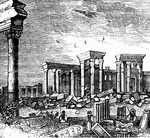
Palmyra
"Amid the barren deserts of Arabia, a few fertile spots of soil arise out of the sandy waste, like islands…
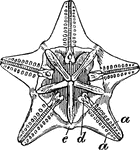
Clypeastrid
A family of irregular sea urchins, flattened into a discoidal or shield like shape, with a mouth central…

Tritons
"Triton was the son of Neptune and Amphitrite, and the poets made him his father's trumpeter. Proteus…

Ferdinand Magellan
A Portuguese sea explorer who sailed for both Portugal and Spain. He was the first to sail from Europe…
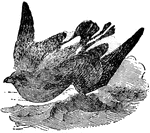
Petrel
A genus of sea-birds. They include many species, all of which have webbed feet and long and strong wings.…

Shark
An extensive genus of fishes of the ray family, found widely distributed in the ocean, but most abundantly…
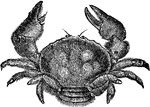
Sponge Crab
A crab that usually hides in sponges on the ocean floor. It apears soft because of the algae that grows…

Porpoise
A small toothed ocean fish. About 6 feet in length and has a blunt head not produced into a long beak,…

Dundee
"A royal and parliamentary burgh and seaport, situated on the east coast of Scotland, in the county…

Compass
"Compass, Mariner's, is the name given to the instrument by which sailors are enabled to steer their…

